5 Mistakes You’re Making with The Kettlebell Front Squat
Sup dude... In this post we continue with our common kettlebell mistakes series. If you haven't read (or seen) the previous episodes in this series. You can check out episodes one, two, and three here. Today were gonna breakdown how to improve your kettlebell front squat.
~2013 I was at certification ("Ck-FMS"... which is no longer offered. To my knowledge.) with Brett Jones and Gray Cook. And Gray said something which has stayed with me to this day.
"... maintain your squat. Train your deadlift."
For years people have pleaded their case for which exercise is "the best" or most "functional." The squat or the deadlift? Here's my take. The squat is the most fundamental exercise/movement but it's NOT the most functional.
And I believe Gray's comment on "maintaining your squat and training your deadlift" is how I also look at the squat vs. the deadlift argument (but I could be wrong).
The squat is fundamental and essential for your health and survival. We should strive to maintain this essential movement (for the rest of our lives!). If we wang a life free of pain... then maintaining our squat is a nonnegotiable (Plus... it's your God-given rest position).
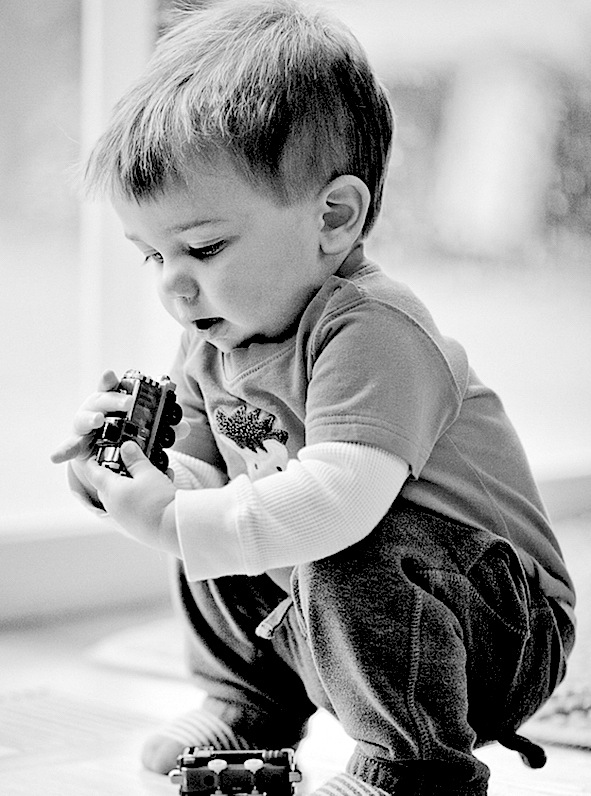
"Someone with a poor squatting movement is much more likely to put undo stress on their lower back and more likely to re-injure themselves frequently throughout their lives." ~ Dr. Mark Nimchuk, DC.
Did you know?
If you possess a poor ability to move from a sitting (i.e., squatting) to standing position. You have a 2 - 5 times higher mortality rate (You can check out the study here.)?
This's why it's essential to maintain that dang squat. And if you plan on loading your squat [with kettlebells]? It only makes sense to make sure you're doing it right.
Rrright?
And that's the inspiration for today's post... to reveal the
... 5 Mistakes You’re Making with The Kettlebell Front Squat
( so you can know how to improve your kettlebell front squat and build a stronger... more capable body.)
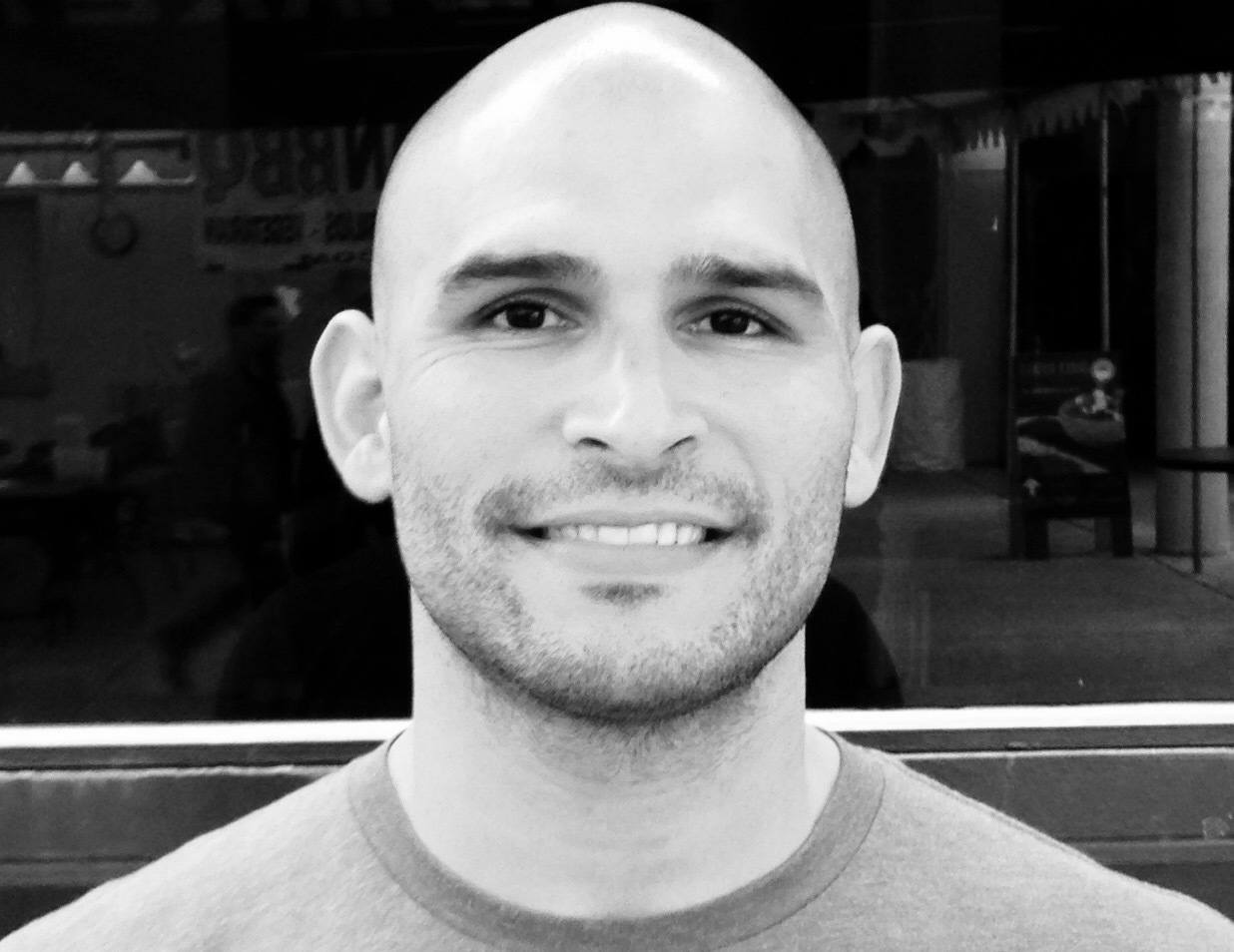

"Can you do me a solid? If you're liking the videos... mind subscribing to my YouTube Channel? I promise they'll help ya become the strongest, most elite, version of yourself!"
hec "the kettlebell coach" g.
Common Kettlebell Mistake #1: Establishing the Right Foot Position.
Every week (on Tuesday) I do video reviews for my students. To give them the feedback... keeping them safe in their training.
... and to help them get the most from their training efforts. One of the first things we address in their program is their set up and foot position specific to them and their hip structure.
Why start there? We tend to go through our day without any regard to what's happening with our feet. Plus... the setup dictates how the rest of the training set will turn out. Poor foot position also affects the hip and knee. These habit bleed in your training.
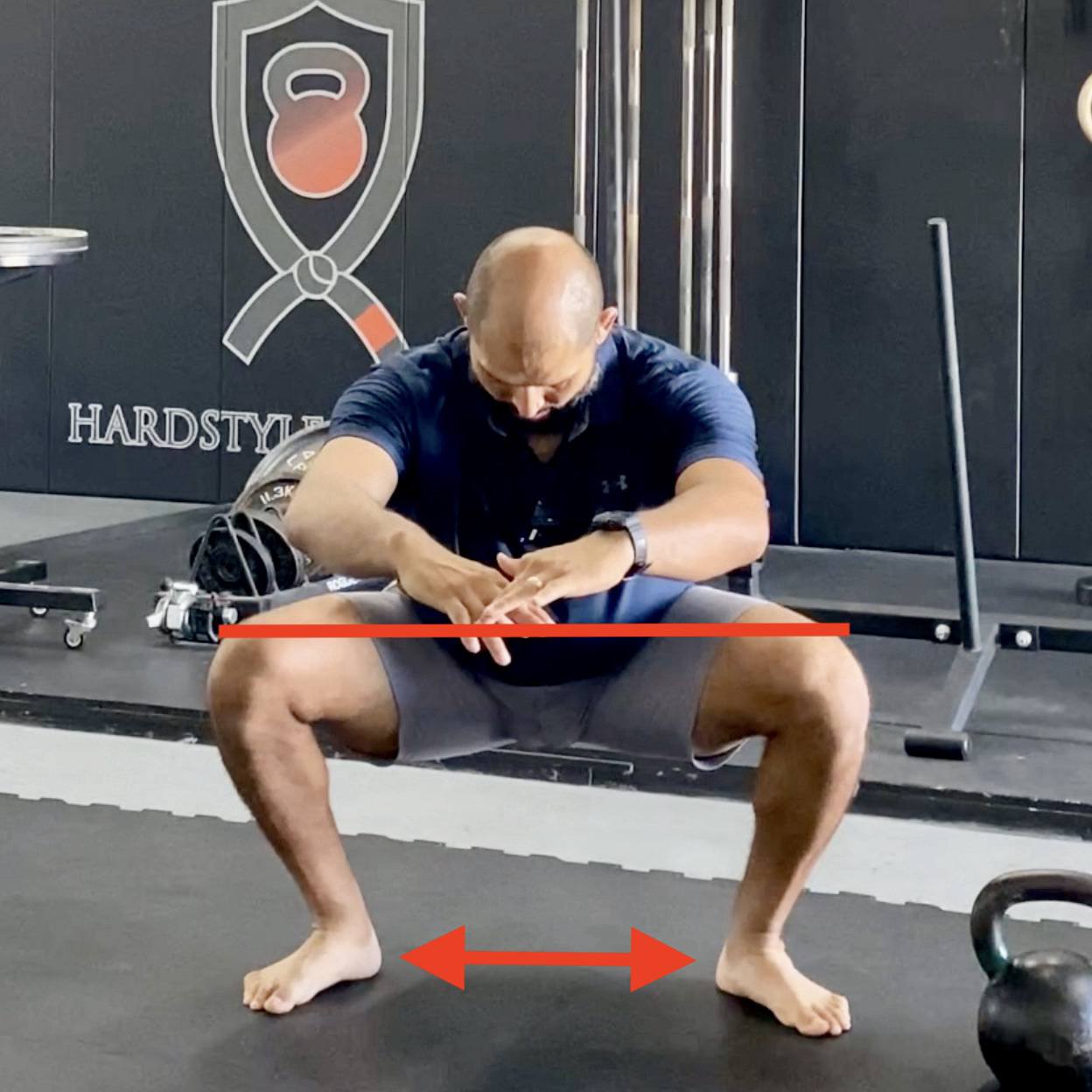
Starting your squats with feet too far apart. The wider the feet. The less hip mobility.
After teaching at SFG certifications and working with students in our gym for over a decade... I noticed a common trend. After cleaning the kettlebell(s)... students would start squatting without regard for their feet. The look on their face told the same story. Something didn't feel right.
For some people squatting with a wide stance works. But these cases are few and far between. I've noticed the people who squatted with a wider stance... lacked either adequate ankle mobility. Sufficient reflexive stability. Or both.
If this is the case for you. I recommend rebuilding your squat foundation from the bottom up.
If this is not the case for you.
... after cleaning the bells. Take one step in. Because - the closer your feet are.
The more hip mobility you have. The further apart your feet are. The less hip mobility you have. And the deeper you can squat [without pain of course] the more stretch you'll get from the glutes which means.
... and stronger and more powerful squat.
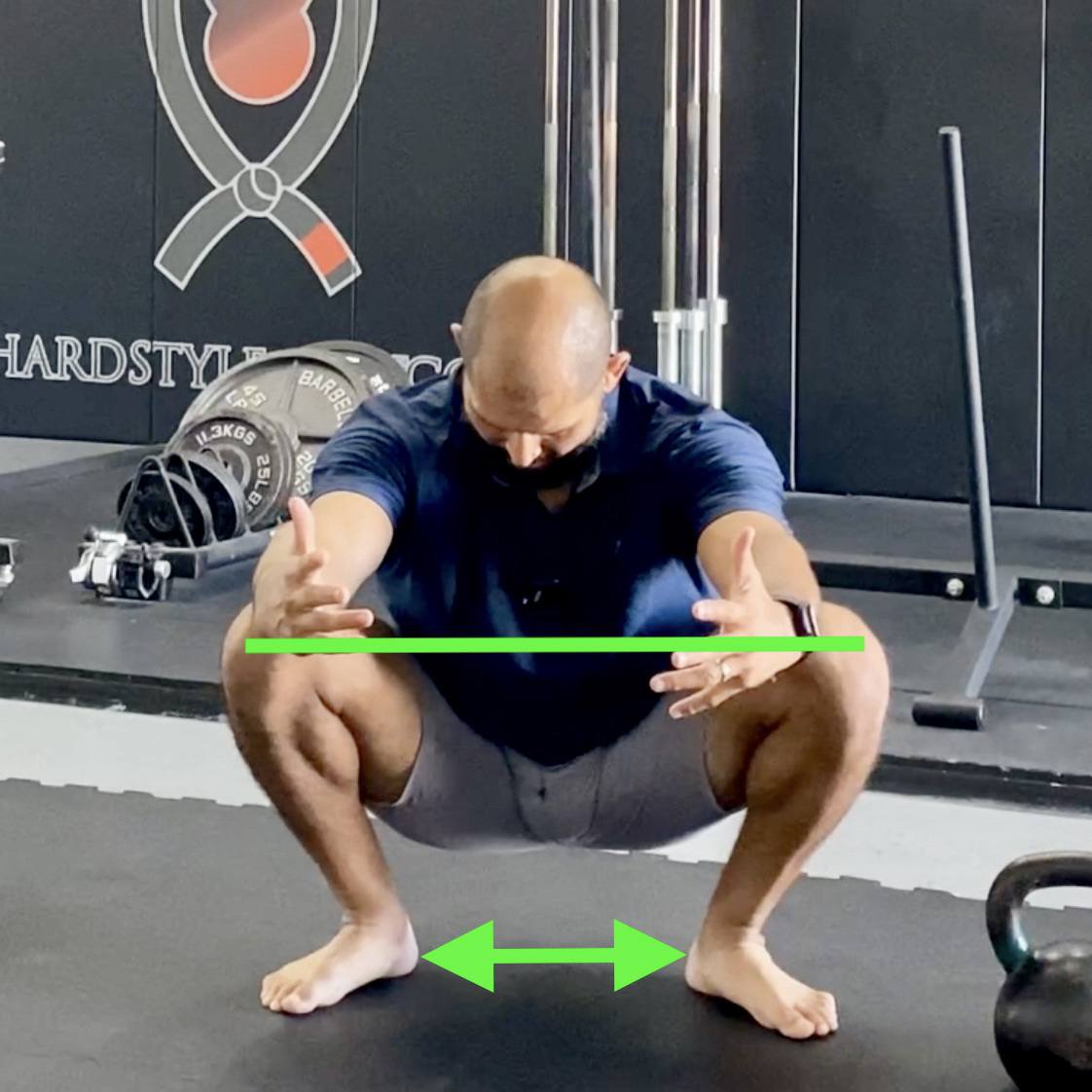
The closer the feet. The better your hip mobility.
Common Kettlebell Mistake #2: Spill your hips + "back squatting" your front squat.
At the first level 2 SFG in Philly (2013) I heard Brett Jones talk about his concept of "spilling your hips" during his swing and squat presentation.
Imagine for a second your pelvis represents a "bowl." And in this bowel is water. The midsection represents a "cylinder."
Focus on keeping the cylinder over top of the bowl as you squat. Instead of breaking at your hips first. Breaking at the hips (anterior pelvic tilt) first tilts the bowl forward "spilling" the water. Not good.
Combine this with disconnecting your elbows from your midsection... losing connection with the lats.
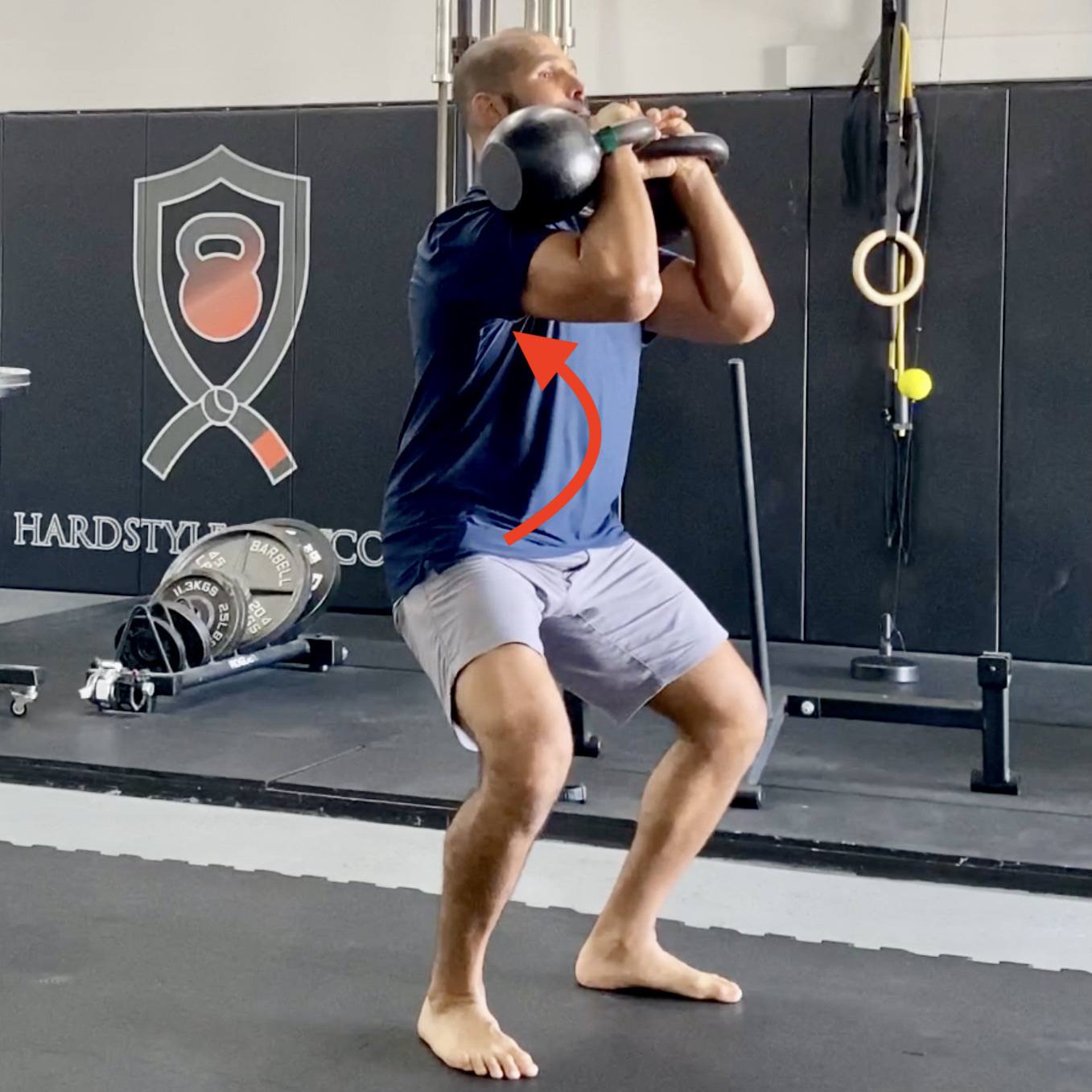
"Spilling your hips" and disconnecting from the rack.
Leaving strength on the table.
Instead.
Break from the knees first. Pull your elbows into your torso and become one with the kettlebells in the rack.
Creating linkage and not leakage.
This keeps the cylinder aligned over the bowl (your hips).
And by consequence... develops stronger abs and more control over the front squat.
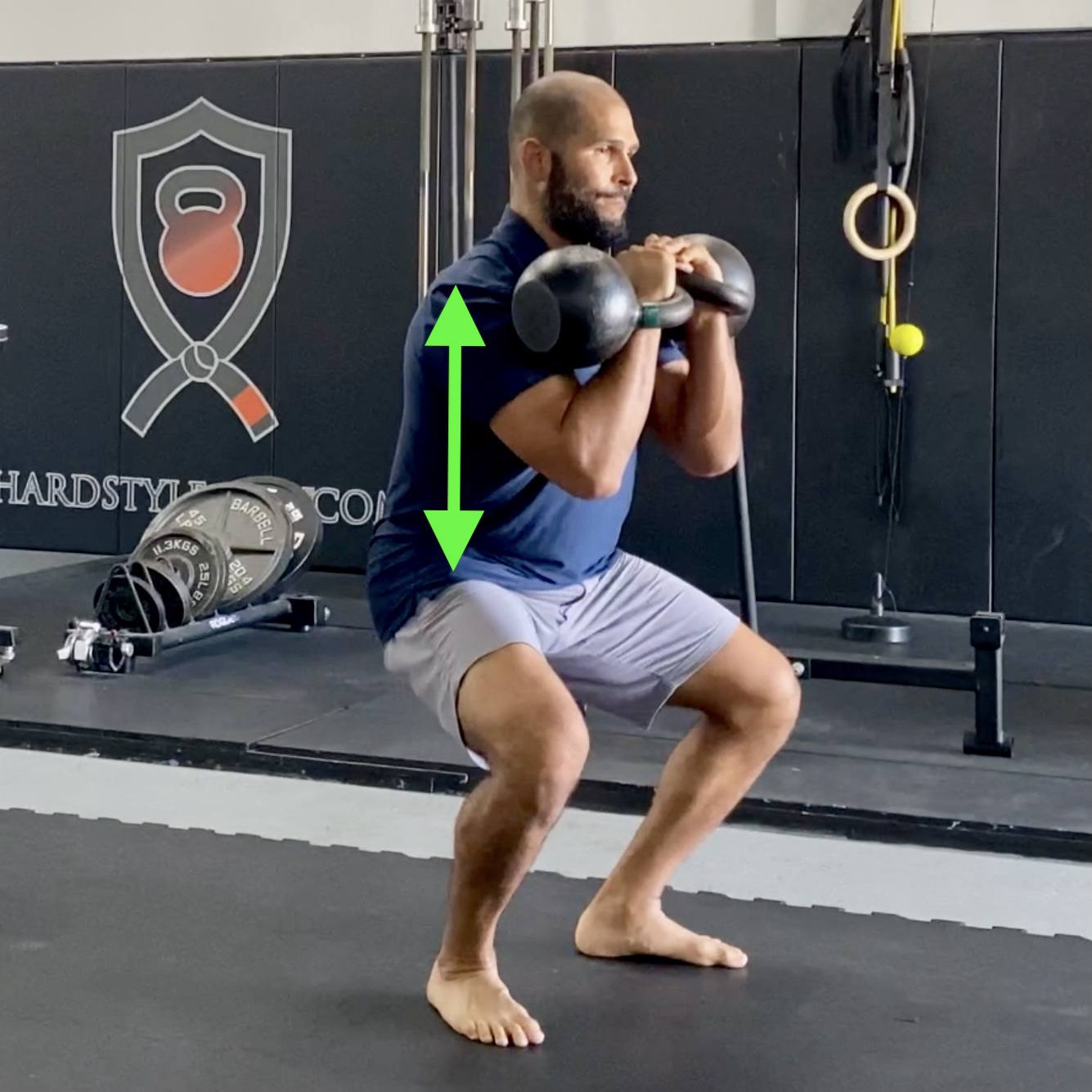
Brace from the midsection. Pull your arms into your ribcage to create "linkage."
Common Kettlebell Mistake #3: Collapsing into the squat vs. "pulling yourself down."
I believe it was Pavel who said (and I paraphrase), "Are you willing to do that with a 48kg kettlebell?"
Before you collapse into the bottom of your squat (to save time and energy)... ask yourself. "Would I squat this way if I had a pair of 48's in the rack?"
This answer is probably, "NO." It's a good reminder to respect all weights. But this's a common mistake with front squats (I know because I've been guilty of this mistake. OVER. And OVER). Especially if you're training kettlebell complexes.
You'd never see a powerlifter collapse into the hole.
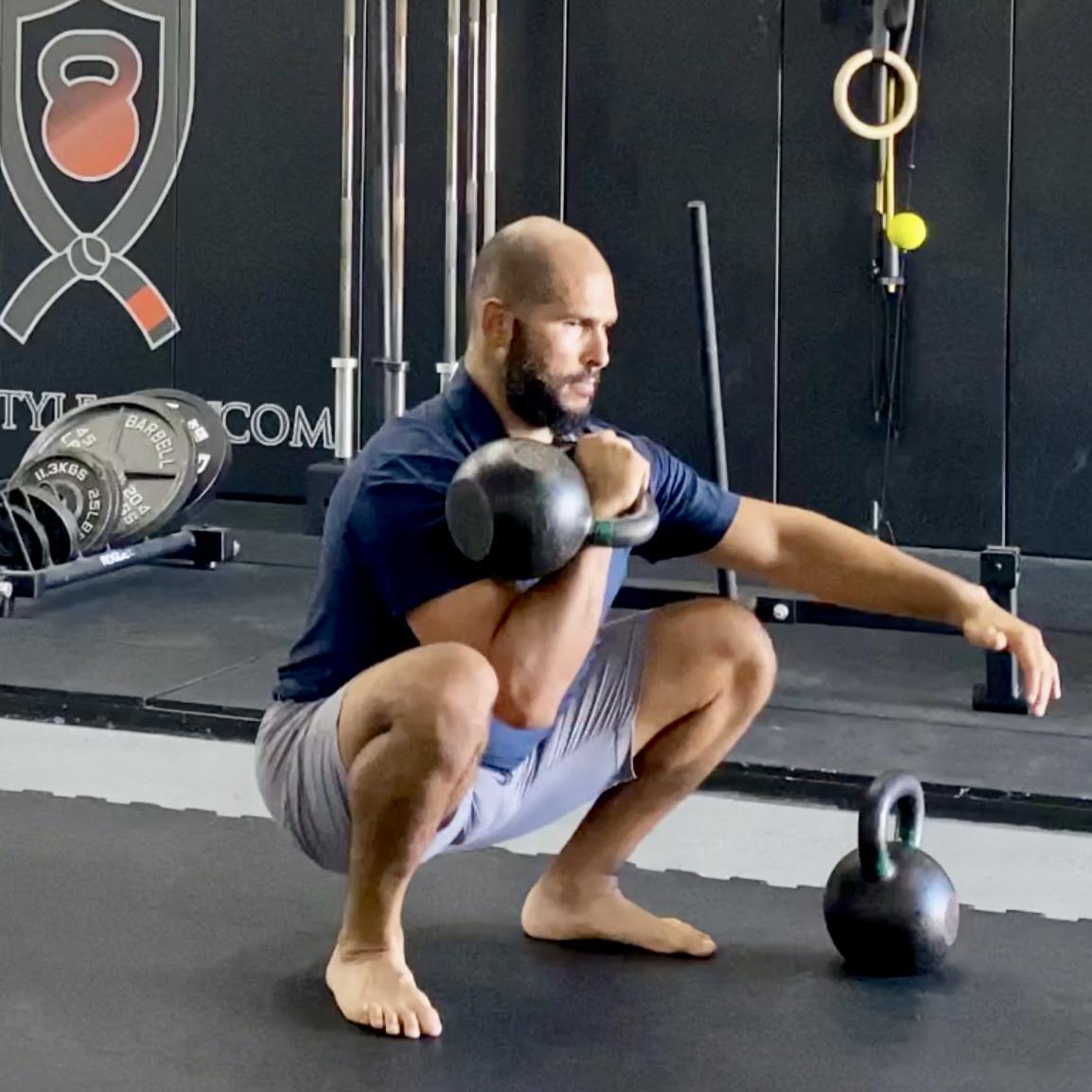
No control of the descent. "Collapsing" into the hole.
To have more control and improve your squat. Combine the skills from mistake #2.
1.) Pull the bells into the rack. 2.) Actively pull yourself into the bottom of the squat (imagine someone is standing behind you trying to pull you up as you're squatting
Envision pulling down against them). Once you're at the bottom. Don't stop pulling. You have more in you.
Keep pulling to get to a deeper position in the squat. For better context. Check out the "20:00" mark in the video where I demo what I'm taking about.
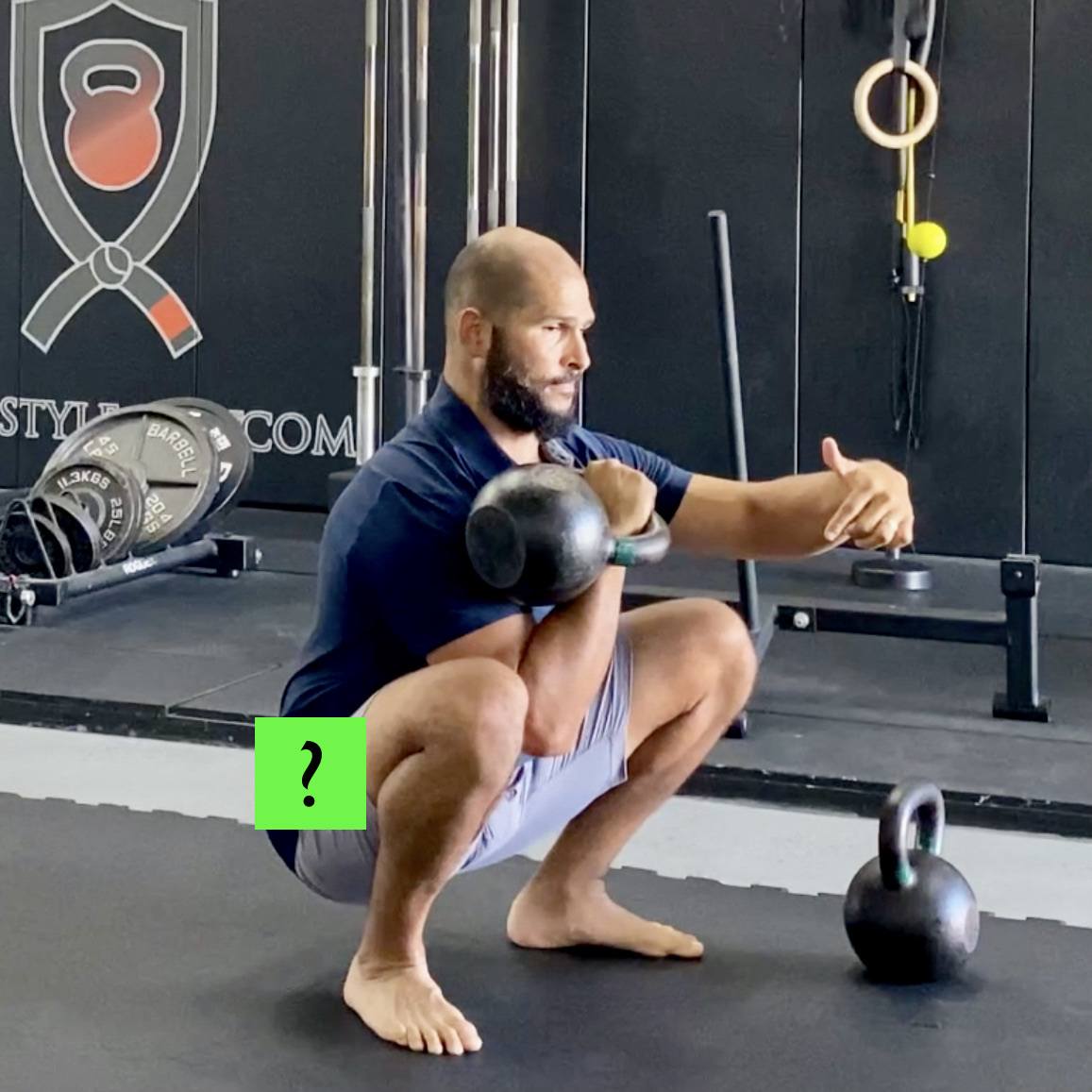
Actively "pull" yourself down into the squat. At the bottom, keep pulling.
Common Kettlebell Mistake #4: Not Pausing or Losing Pressure in the Hole.
I think we can all agree on ONE THING. Front Squats suck. Right? Which's why another mistake people make is losing pressure in the hole (i.e., the bottom of the squat).
I can't remember where I read this but. Someone asked Geoff Neupert (Master Kettlebell Instructor and author of many kettlebell programs). Why he didn't write the "STRONG!" program (a program based on the clean + press) using the kettlebell front squat? His answer?
"Because I wanted people to actually DO the program." There you have it. Confirmation from the master... Kettlebell front squats are BRU. TAL.
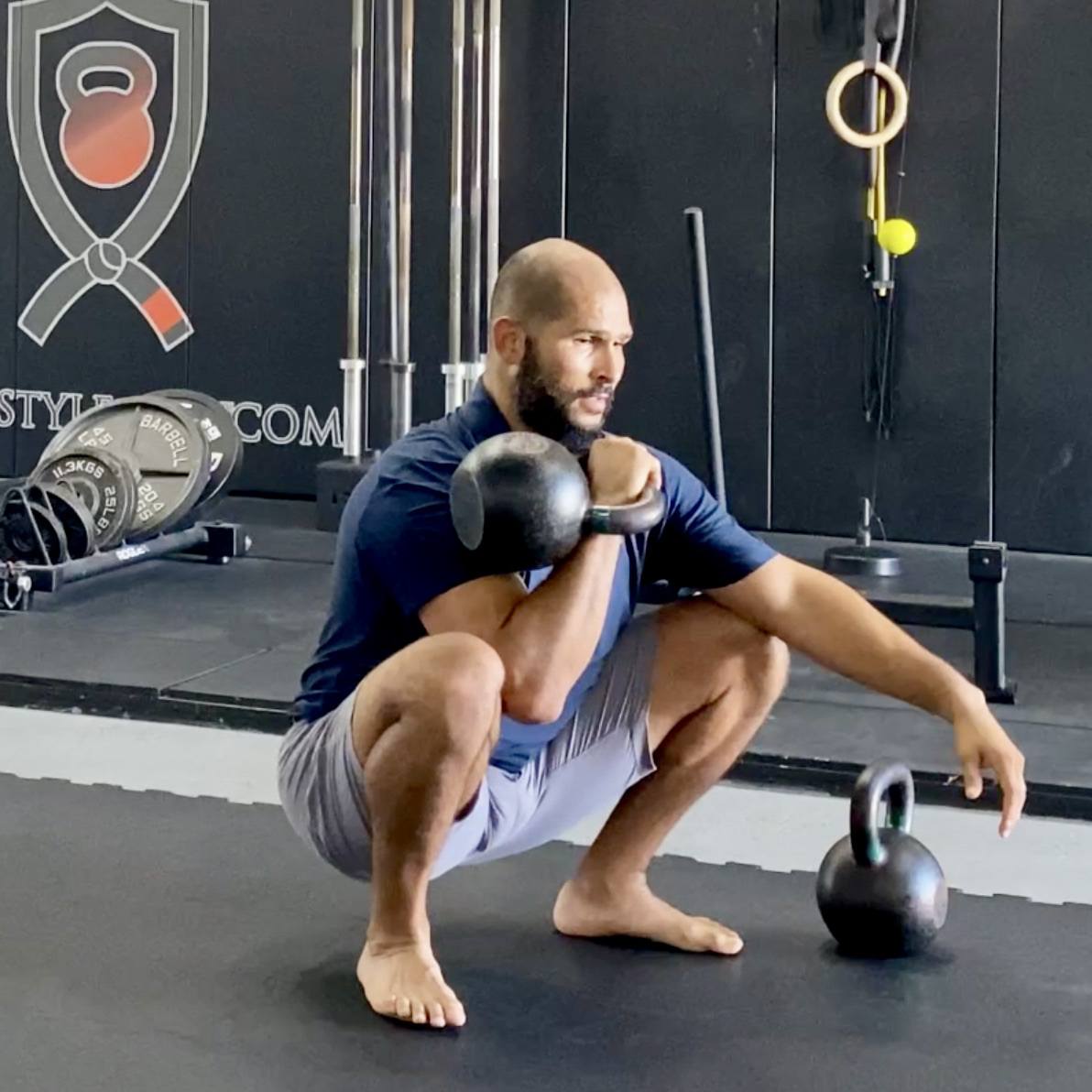
Losing pressure at the bottom of the squat.
Front squats are a lesson is tension and bracing through the midsection. Plus... the heavier the load gets. The more you wanna focus on maintaining pressure in the hole to protect your back.
Practice this with light loads... hell... practice this with ALL loads. But if you can master this skill and make a light load feel "heavy."
When you get to what is a heavy load for you... you will have established the right habits and won't lose pressure.
1.) At the top take a deep breath as if breathing through a straw and brace. 2.) Pull the bells into the rack. 3.)Actively pull yourself into the hole. 4.) Pause and initiate your ascent with a grunt.
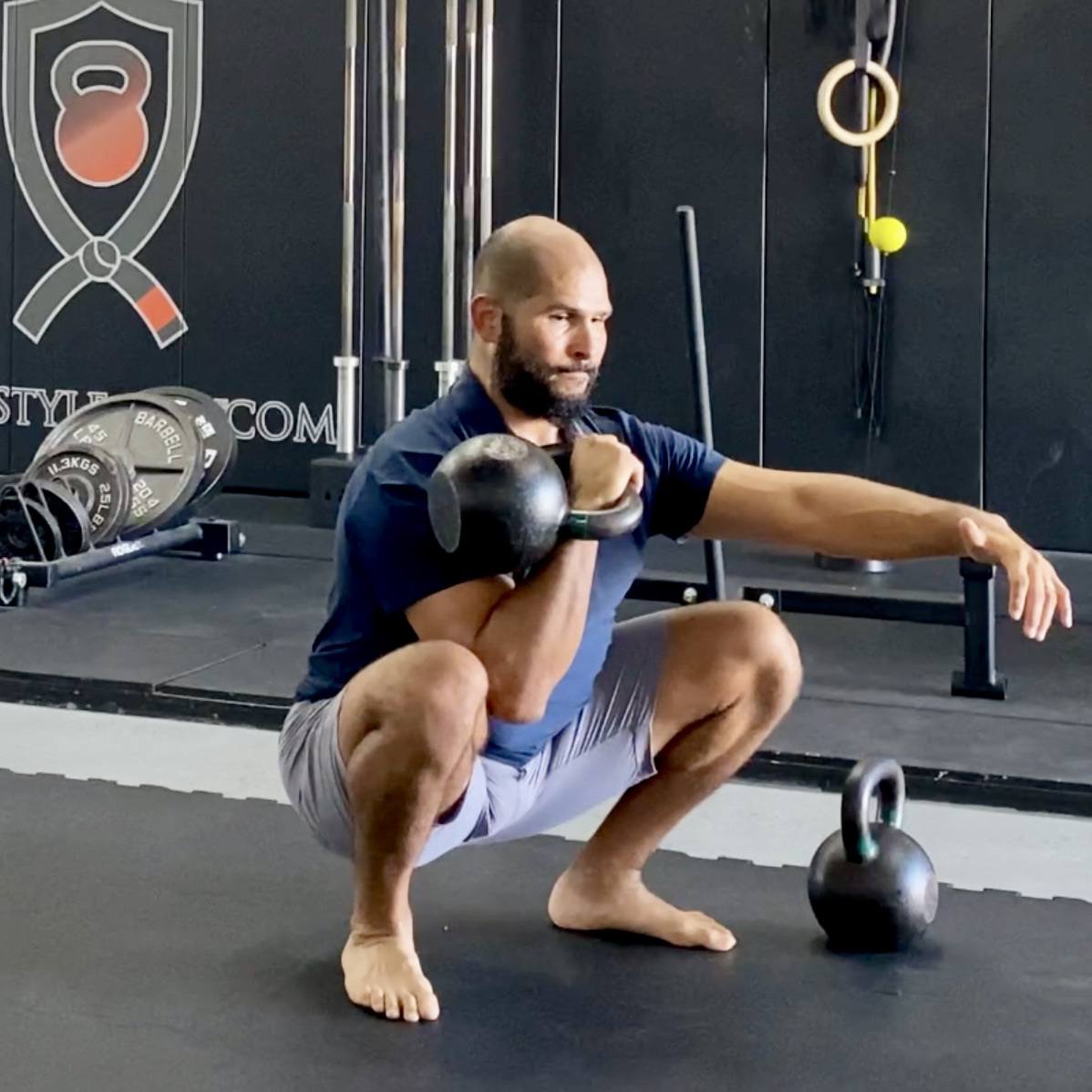
Inhale at the top. At the bottom of the squat, maintain pressure. Initial ascent with a grunt.
Common Kettlebell Mistake #5: Breaking your "3 Point Structure."
Like the kettlebell swing. There's a 3pt structure in your squat.
Only this structure is from the knee up (Knees, hips, and shoulders).
If you're prepping for the SFG this is important to know. Because... if you break your 3pt structure during the front squat skills test. You'll fail the cert.
If you failed to brace and maintain pressure in the bottom of the squat... this can lead to your hips ascending first and your shoulders second (which also puts you in disadvantageous position. Losing leverage with the kettlebell and potentially dropping the bells from the rack.)
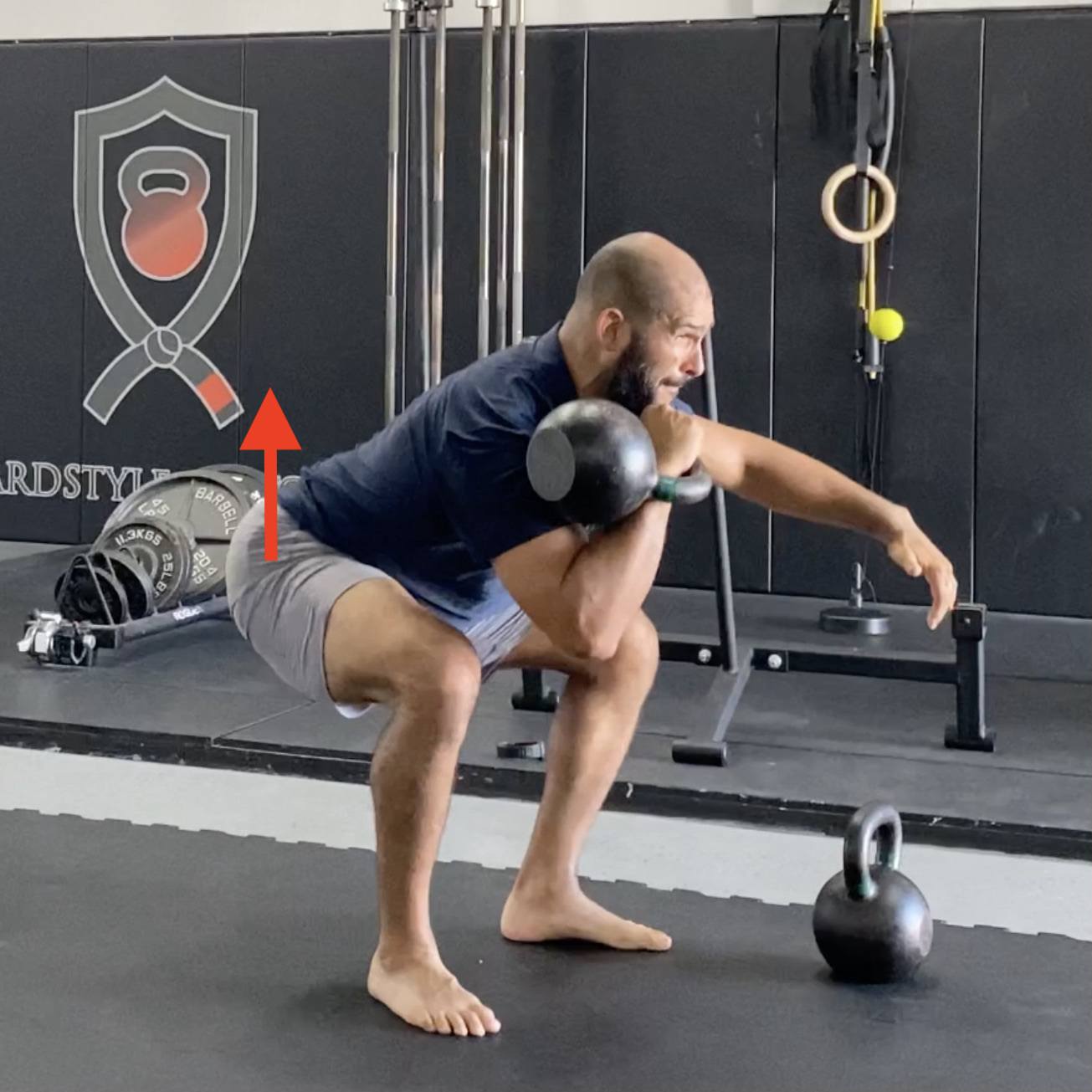
Breaking 3pt structure. Hips ascending first. Shoulders last.
Notice how all these mistakes and corrections stack on each other:
1.) Establish your foot position based on your hip structure.
2.) Pull the bells into the rack.
3.) Actively pull yourself into the bottom of the squat.
4.) Maintain pressure in the hole.
5.) Initiate the ascent with a grunt while maintaining your 3pt structure (knees, hips, and shoulders).
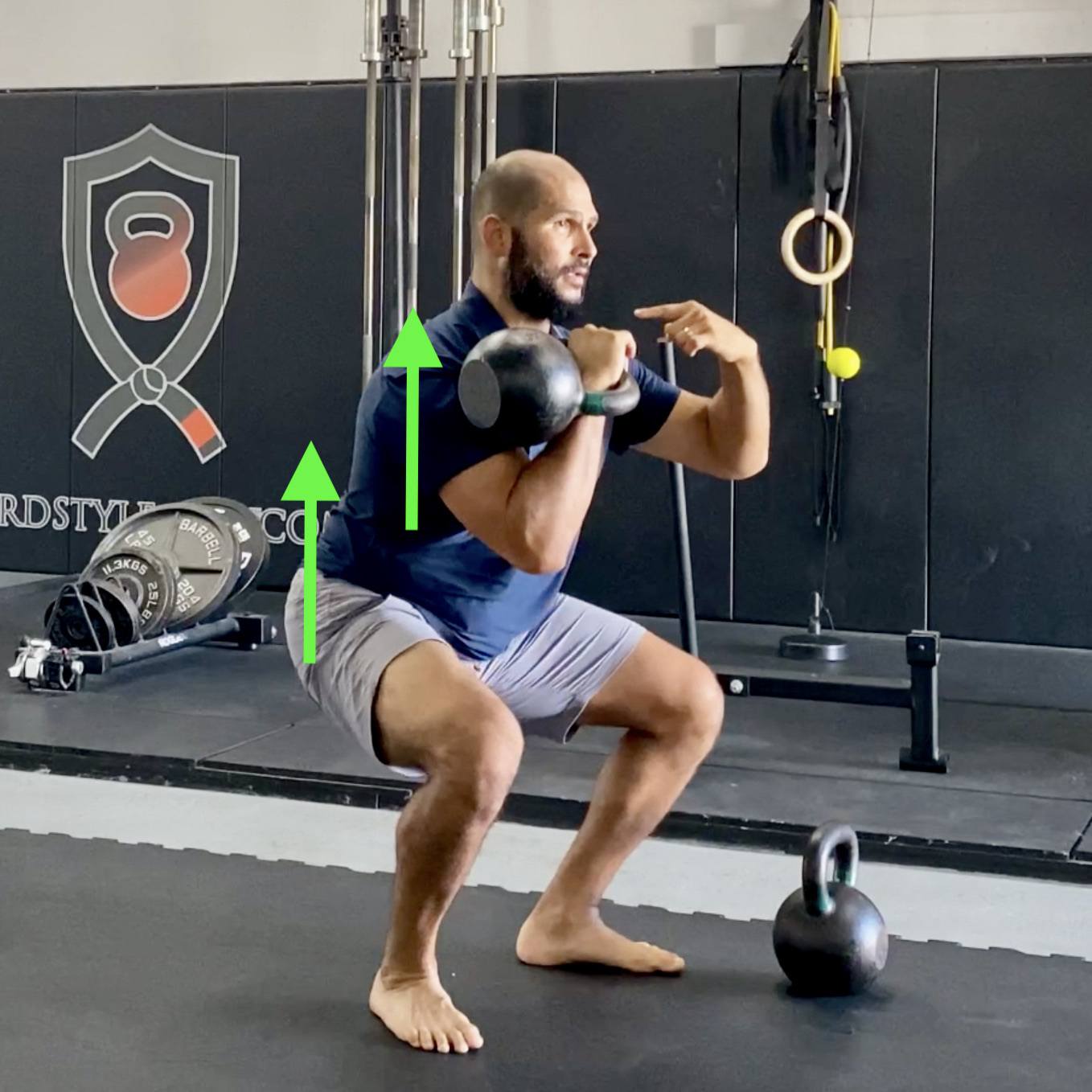
Initial ascent with a grunt with knees, hips, and shoulders in unison.
And there you have it dude. 5 mistakes you're making with the kettlebell front squat and how to improve them and take your squat game to the next level.
Let me know which of these work best for ya and leave me a comment below.
hec "the kettlebell coach" g.
Need help combining the Swing, Clean, Press and Squat into a complete program?
So you can become more savage than Randy?
Check out our premium More Muscle and LESS FAT Kettlebell training system, "Double KB Manifesto (DKBM)."


[…] Randomly placing your arm "out to the side" at a 90˚ angle leaves ZERO support for your shoulder. Remember what I said on the 3rd common mistake for the squat? […]